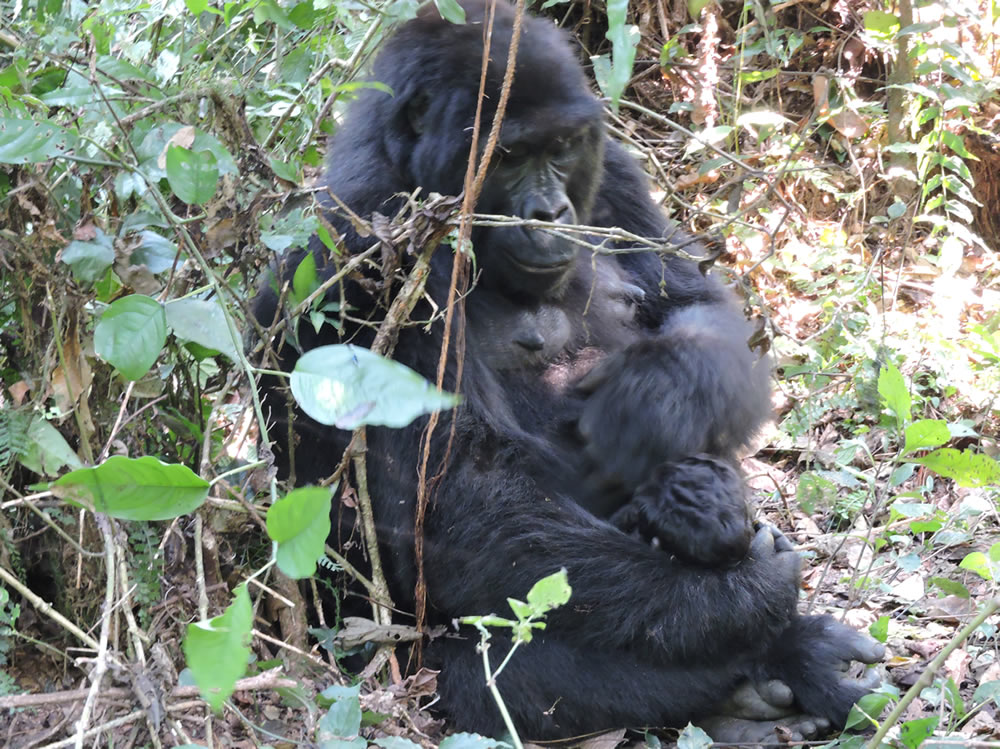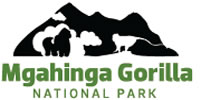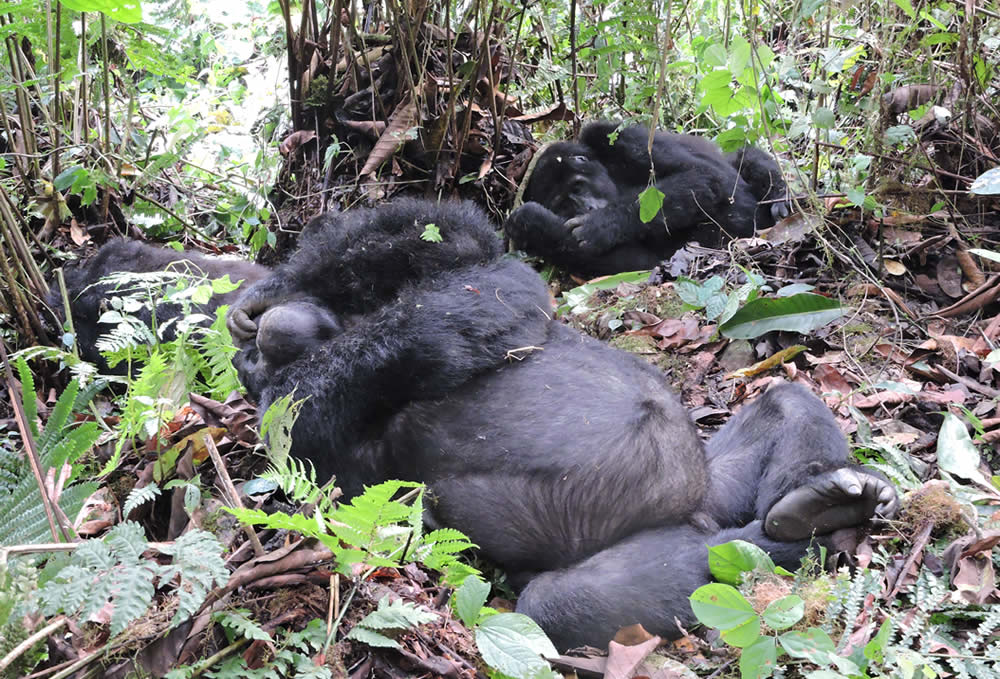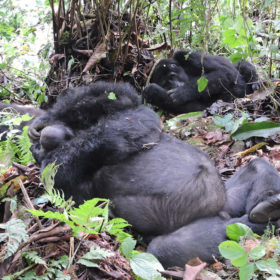The most exciting and memorable part of an African safari is getting real up close to the animals in the wild. And when it comes to wildlife encounters, gorilla trekking is the most desired activity that every traveler would wish to experience.
Trekking the gorillas involves a hike to the home of these critically endangered apes to watch them carry on their daily activities, but isn’t this intruding on someone’s personal privacy? And does this activity protect the interest of the gorillas and their sustainability?
Mountain gorillas being listed as critically endangered species, habitat loss, poaching, hunting, human wildlife conflict, tourism and transmission of human diseases are their major threats that would lead to their extinction in no time.
And here the question arises again, is gorilla trekking good for conservation? Is exposing the mountain gorilla to more people, so frequently safe to them?
Some would argue that gorilla encounters are, unfortunately, not good for these apes. The fact that mountain gorillas do not have many natural predators, human beings are the major force leading to the extinction of these forest giants.
However on the other hand, if it were not for tourism, most of the forests where mountain gorillas dwell would have been destroyed 10 to 20 years ago. So it’s rightfully wrong to impart only negativity to gorilla tourism in Uganda, Rwanda and D.R. Congo yet tourism has largely led to an increase in the number of gorillas worldwide.
![]() The mega backer of the conservation efforts in gorilla tourism are the gorilla trekking permit fees. Costing $600, $1500 and $400 in Uganda, Rwanda and Congo respectively, the fees seem to be high but a great deal in the protection of the gorilla and their habitats.
The mega backer of the conservation efforts in gorilla tourism are the gorilla trekking permit fees. Costing $600, $1500 and $400 in Uganda, Rwanda and Congo respectively, the fees seem to be high but a great deal in the protection of the gorilla and their habitats.
The essence of issuing permits is to carefully control gorilla tourism. Only eight trekkers are permitted to visit a gorilla family in a day. All treks are led by the park rangers to ensure that the gorilla trekking etiquette is maintained and also to make sure that all treks follow the drafted set of rules that are well laid out during the pre – trek briefing session before the commencement of every trek.
The permit fees cater for the rangers salaries, these are unsung heroes that need to be rewarded, because they are the first people in protecting the great apes and conserving their homes. The fees also fund gorilla monitoring activities, research, veterinary and health care as well as full management of gorilla destinations.
Part of the profits from gorilla permits is given back to the local communities around the park for village development and completion of infrastructure projects like road construction, schools, health centers, etc.
Gorilla tourism becomes even a more powerful tool in nature conservation when travelers use local tour operators, lodges and porters. This economic value attracts more local people to engage in gorilla ecotourism, creating more awareness on the importance of conservation. And remember anything not understood, is not worth the implementation.
![]() Since gorilla tourism provides employment to the members of the local community in form of rangers, porters and trail maintainers, many of the former poachers have become game rangers and avid anti – poaching agents. The gorillas are now ambitiously protected by the community for tourism, research and related social projects.
Since gorilla tourism provides employment to the members of the local community in form of rangers, porters and trail maintainers, many of the former poachers have become game rangers and avid anti – poaching agents. The gorillas are now ambitiously protected by the community for tourism, research and related social projects.
Putting all that together, gorilla trekking is not only an exclusive wildlife encounter in Africa, but also an important conservation activity that not only benefits the local communities but also a strong tool for protection of these endangered primates. It is simply a perfect do venture for Eco tourists in Uganda, Rwanda and D.R. Congo.
The most exciting and memorable part of an African safari is getting real up close to the animals in the wild. And when it comes to wildlife encounters, gorilla trekking is the most desired activity that every traveler would wish to experience.
Trekking the gorillas involves a hike to the home of these critically endangered apes to watch them carry on their daily activities, but isn’t this intruding on someone’s personal privacy? And does this activity protect the interest of the gorillas and their sustainability?
Mountain gorillas being listed as critically endangered species, habitat loss, poaching, hunting, human wildlife conflict, tourism and transmission of human diseases are their major threats that would lead to their extinction in no time.
And here the question arises again, is gorilla trekking good for conservation? Is exposing the mountain gorilla to more people, so frequently safe to them?
Some would argue that gorilla encounters are, unfortunately, not good for these apes. The fact that mountain gorillas do not have many natural predators, human beings are the major force leading to the extinction of these forest giants.
However on the other hand, if it were not for tourism, most of the forests where mountain gorillas dwell would have been destroyed 10 to 20 years ago. So it’s rightfully wrong to impart only negativity to gorilla tourism in Uganda, Rwanda and D.R. Congo yet tourism has largely led to an increase in the number of gorillas worldwide.
 The mega backer of the conservation efforts in gorilla tourism are the gorilla trekking permit fees. Costing $600, $1500 and $400 in Uganda, Rwanda and Congo respectively, the fees seem to be high but a great deal in the protection of the gorilla and their habitats.
The mega backer of the conservation efforts in gorilla tourism are the gorilla trekking permit fees. Costing $600, $1500 and $400 in Uganda, Rwanda and Congo respectively, the fees seem to be high but a great deal in the protection of the gorilla and their habitats.
The essence of issuing permits is to carefully control gorilla tourism. Only eight trekkers are permitted to visit a gorilla family in a day. All treks are led by the park rangers to ensure that the gorilla trekking etiquette is maintained and also to make sure that all treks follow the drafted set of rules that are well laid out during the pre – trek briefing session before the commencement of every trek.
The permit fees cater for the rangers salaries, these are unsung heroes that need to be rewarded, because they are the first people in protecting the great apes and conserving their homes. The fees also fund gorilla monitoring activities, research, veterinary and health care as well as full management of gorilla destinations.
Part of the profits from gorilla permits is given back to the local communities around the park for village development and completion of infrastructure projects like road construction, schools, health centers, etc.
Gorilla tourism becomes even a more powerful tool in nature conservation when travelers use local tour operators, lodges and porters. This economic value attracts more local people to engage in gorilla ecotourism, creating more awareness on the importance of conservation. And remember anything not understood, is not worth the implementation.
Since gorilla tourism provides employment to the members of the local community in form of rangers, porters and trail maintainers, many of the former poachers have become game rangers and avid anti – poaching agents. The gorillas are now ambitiously protected by the community for tourism, research and related social projects.
Putting all that together, gorilla trekking is not only an exclusive wildlife encounter in Africa, but also an important conservation activity that not only benefits the local communities but also a strong tool for protection of these endangered primates. It is simply a perfect do venture for Eco tourists in Uganda, Rwanda and D.R. Congo.


